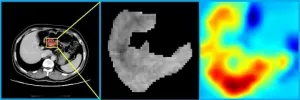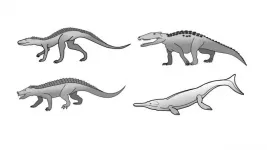Autoimmune diseases: similar molecular signatures in target tissues
2021-01-07
(Press-News.org) Autoimmune diseases are diseases of "mistaken identity", where the immune system - which is supposed to protect us against infectious diseases and neoplasias - mistakenly attacks and destroys components of our own body. The incidence of autoimmune diseases is increasing on a worldwide basis, and these diseases - including type 1 diabetes (T1D), systemic lupus erythematosus (SLE), multiple sclerosis (MS) and rheumatoid arthritis (RA) - now affect up to 5% of the population in different regions. There is no cure for autoimmune diseases, and while the immune target of T1D, SLE, MS, and RA are distinct, they share several similar elements, including up to 50% common genetic risk, chronic local inflammation and mechanisms mediating target tissue damage.
In spite of these common features, autoimmune disorders are traditionally studied independently and with a focus on the immune system rather than on the target tissues. There is, however, increasing evidence that the target tissues of these diseases are not innocent bystanders of the autoimmune attack but participate in a deleterious dialogue with the immune system that contributes to their own demise, as first shown by the Eizirik's group for T1D. Furthermore, in T1D, several of the risk genes for the disease act at the target tissue level - in this case pancreatic β-cells - regulating the responses to viral infections, the dialogue with the immune system and apoptosis. Against this background, the Authors hypothesized that key inflammation-induced mechanisms, potentially shared between T1D, SLE, MS and RA, may drive similar molecular signatures at the target tissue level. Discovering these similar (or, in some cases, divergent) disease-specific signatures may allow the identification of key pathways that could be targeted for therapy, including the re-purposing of drugs already in clinical use for other diseases.
To test this hypothesis, they obtained RNA sequencing datasets (i.e. studies where all genes expressed on a diseased tissue, as compared to a healthy one, are identified) from pancreatic β-cells from controls or individuals affected by T1D, from kidney cells from controls or individuals affects by SLE, from optic chiasm from controls or individuals affected by MS and from joint tissue from controls or individuals affected by RA. These studies indicate major common gene expression changes at the target tissues of the four autoimmune disease evaluated, many of them downstream of interferons, and massive expression of candidate genes (>80% in all cases). One candidate gene in common between the four diseases is TYK2, a protein that regulates interferon signaling, and the Eizirik's group showed that use of TYK2 inhibitors - already in use for other autoimmune diseases - protect beta-cells against immunemediated damage in pre-clinical models of diabetes.
INFORMATION:
ELSE PRESS RELEASES FROM THIS DATE:
2021-01-07
Researchers at the University of Gothenburg now suggest a possible cure for children with hard-to-treat forms of neuroblastoma using a new combination of drugs. In a new study in the journal Cancer Research, they describe how a two small molecule-based drug combination likely inhibit the tumor's growth.
Neuroblastoma is the most common form of childhood cancer, derived from the peripheral nervous system, i.e., the part of the nervous system that is not the brain or spinal cord. The disease can occur in the chest, neck, abdomen and adrenal glands and can also spread to the spine. Symptoms include general aches, anemia and skeletal pain.
The ...
2021-01-07
Stomach cancer, or gastric cancer, is a common gastrointestinal malignancy. Peritoneal metastasis occurs in a majority of patients with advanced stomach cancer and is considered as an aggressive disease with poor outcomes.
Patients with peritoneal metastasis are typically not eligible for curative surgery. Therefore, preoperative detection and diagnosis of peritoneal metastasis are critical to inform treatment decision-making and avoid unnecessary surgery.
A new study published in the JAMA Network Open on Jan. 5 shows that deep learning can help predicting the occult peritoneal metastasis in stomach cancer. It provides a novel and noninvasive approach for ...
2021-01-07
Olduvai (now Oldupai) Gorge, known as the Cradle of Humankind, is a UNESCO World Heritage site in Tanzania, made famous by Louis and Mary Leakey. New interdisciplinary field work has led to the discovery of the oldest archaeological site in Oldupai Gorge as reported in Nature Communications, which shows that early human used a wide diversity of habitats amidst environmental changes across a 200,000 year-long period.
Located in the heart of eastern Africa, the Rift System is a prime region for human origins research, boasting extraordinary records of extinct human species and environmental records spanning several million years. For more than a century, archaeologists and human palaeontologists have been exploring the East African Rift outcrops and unearthing hominin fossils in surveys ...
2021-01-07
New research by scientists at the University of Bristol explains how a 'stop-start' pattern of evolution, governed by environmental change, could explain why crocodiles have changed so little since the age of the dinosaurs.
Crocodiles today look very similar to ones from the Jurassic period some 200 million years ago. There are also very few species alive today - just 25. Other animals such as lizards and birds have achieved a diversity of many thousands of species in the same amount of time or less.
Prehistory also saw types of crocodile we don't see today, including giants as big as dinosaurs, plant-eaters, fast ...
2021-01-07
Scientists at the University of Birmingham, UK, have shown that a novel low molecular weight dextran-sulphate, ILB® could play a key role in treating open angle glaucoma (OAG), a neurodegenerative disease that affects over 70 million people worldwide and causes irreversible blindness.
OAG develops slowly over many years. Excessive matrix deposition (fibrosis) within the eye's main fluid drainage site can lead to increased intraocular pressure (IOP), resulting in damage to the optic nerve.1
The research, reported in npj Regenerative Medicine, has ...
2021-01-07
The North Sea is a heavily trafficked area, with major shipping routes crossing its waters, and fisheries, offshore oil rigs, and wind farms populating its waves. All this activity inevitably has an effect on marine wildlife, and scientists are particularly interested in how the harbor porpoise population has fared in the face of such disturbances.
The harbor porpoise is known as a "sentinel species" - animals which indicate the health of an ecosystem and point to potential risks (think of the canary in the coal mine). According to a recent study published in Frontiers ...
2021-01-07
A new study in the Oxford Economic Papers finds that migration flows the last 500 years from high sunlight regions to low sunlight regions influence contemporary health outcomes in destination countries.
The researchers here noted that people's ability to synthesize vitamin D from sunlight declines with skin pigmentation, and that vitamin D deficiency is directly associated with higher risk of mortality, from illnesses including cardiovascular disease, type 1 and type 2 diabetes, hypertension, and certain cancers. Recent research even .finds that vitamin D affects the severity of COVID-19.
Researchers here focused on ...
2021-01-07
Sophia Antipolis, 7 January 2021: Patients with acute heart failure nearly double their risk of dying if they get COVID-19, according to research published today in ESC Heart Failure, a journal of the European Society of Cardiology (ESC).1 The small, single centre study highlights the need for patients with heart failure to take extra precautions to avoid catching COVID-19.
"Our results support prioritising heart failure patients for COVID-19 vaccination once it is available," said study lead investigator Dr. Amardeep Dastidar, a consultant interventional cardiologist at North Bristol NHS Trust and Bristol Heart Institute, UK. "In the meantime, heart failure patients of all ages should ...
2021-01-07
Modelling study suggests that pregnant women in India, Pakistan, Bangladesh, who are exposed to poor air quality, may be at higher risk of stillbirths and miscarriages.
An estimated 349,681 pregnancy losses per year in south Asia were associated with exposure to PM2.5 concentrations that exceeded India's air quality standard (more than 40 μg/m³), accounting for 7% of annual pregnancy loss in the region from 2000-2016.
First study to estimate the effect of air pollution on pregnancy loss across the region indicates that air pollution could be a major contributor to pregnancy loss in south Asia, so controlling air pollution is vital for improving maternal ...
2021-01-07
WHO H. Gilbert Welch MD, MPH, Senior Investigator, Center for Surgery and Public Health, Brigham and Women's Hospital; co-author of a new Sounding Board article published in The New England Journal of Medicine.
WHAT Melanoma of the skin is now the third most commonly diagnosed cancer in the U.S. Diagnoses of melanoma are six times as high today as they were 40 years ago. While incidence of melanoma has been rising steeply, melanoma mortality has been generally stable. In a Sounding Board article, Welch and colleagues present evidence for why they believe that increased diagnostic scrutiny is the primary driver of the rapid rise in melanoma diagnoses.
"Melanoma is now the posterchild for overdiagnosis," said Welch. "Although the conventional response has been ...
LAST 30 PRESS RELEASES:
[Press-News.org] Autoimmune diseases: similar molecular signatures in target tissues




